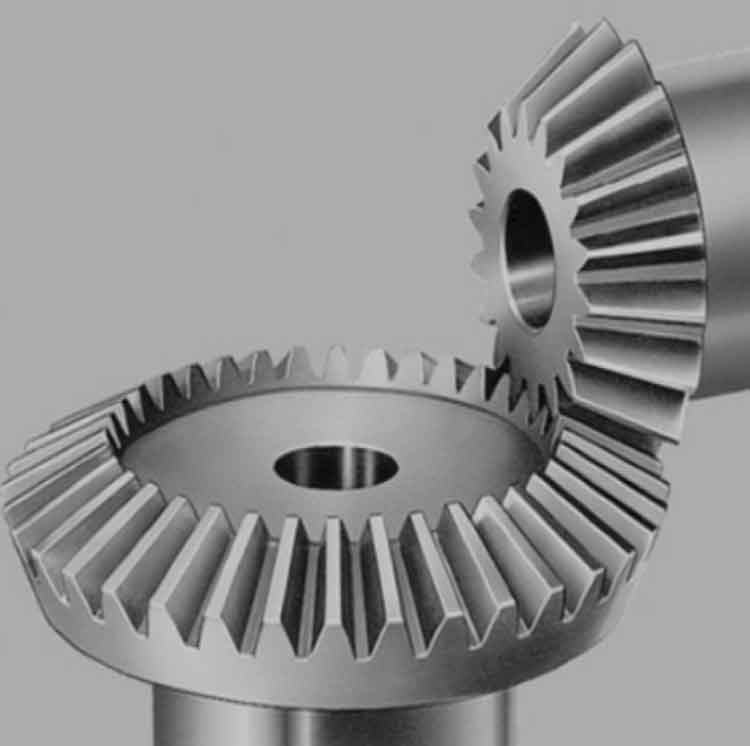Straight bevel gear is critical components in many mechanical systems, providing efficient power transmission between intersecting shafts. The performance and longevity of these gears are heavily influenced by wear and fatigue, two primary failure modes that can significantly impact their reliability and service life. This article delves into the wear and fatigue analysis of straight bevel gear, examining the underlying mechanisms, contributing factors, and methods for enhancing durability.

Introduction
Straight bevel gear is commonly used in automotive differentials, industrial machinery, and aerospace applications due to their ability to transmit torque between non-parallel shafts. However, their performance can be compromised by wear and fatigue, leading to straight bevel gear failure and subsequent downtime. Understanding these phenomena is crucial for improving straight bevel gear design, materials, and maintenance practices.
Wear Mechanisms in Straight Bevel Gears
Wear in straight bevel gear occurs due to the relative motion between contacting surfaces under load. Several wear mechanisms can affect these straight bevel gear, including:
- Adhesive Wear: Occurs when two surfaces slide over each other, causing material transfer from one surface to the other.
- Abrasive Wear: Results from hard particles or asperities on one surface plowing into the softer surface, removing material.
- Surface Fatigue Wear: Caused by repeated loading and unloading, leading to the initiation and propagation of cracks on straight bevel gear surface.
Table 1: Common Wear Mechanisms in Straight Bevel Gear
| Wear Mechanism | Description | Contributing Factors |
|---|---|---|
| Adhesive Wear | Material transfer between contacting surfaces | Poor lubrication, high load |
| Abrasive Wear | Hard particles remove material from the gear surface | Contaminants, surface roughness |
| Surface Fatigue Wear | Crack formation due to cyclic loading | High cyclic stress, material properties |
Fatigue in Straight Bevel Gear
Fatigue is a process of progressive and localized structural damage that occurs when a material is subjected to cyclic loading. In straight bevel gear, fatigue can manifest as:
- Bending Fatigue: Arises from the repeated bending of straight bevel gear teeth under load, leading to crack initiation and propagation at the root of the teeth.
- Contact Fatigue: Occurs due to cyclic contact stresses on straight bevel gear tooth surfaces, resulting in pitting or spalling.
Factors Influencing Fatigue
Several factors can influence the fatigue life of straight bevel gear:
- Material Properties: The hardness, toughness, and fatigue strength of straight bevel gear material play a significant role in determining its fatigue resistance.
- Gear Geometry: Tooth shape, size, and the number of teeth affect the distribution of stresses and, consequently, the fatigue life.
- Surface Finish: Smoother surfaces reduce stress concentrations and the likelihood of crack initiation.
- Lubrication: Proper lubrication minimizes friction and wear, reducing the chances of fatigue failure.
Table 2: Factors Influencing Fatigue Life of Straight Bevel Gear
| Factor | Impact on Fatigue Life |
|---|---|
| Material Properties | Higher strength and toughness improve fatigue resistance |
| Gear Geometry | Optimized design reduces stress concentrations |
| Surface Finish | Smoother surfaces lower the risk of crack initiation |
| Lubrication | Reduces friction and wear, enhancing fatigue life |
Methods for Enhancing Durability
To mitigate wear and fatigue in straight bevel gear, several approaches can be employed:
- Material Selection: Choosing high-strength, wear-resistant materials can enhance straight bevel gear durability.
- Heat Treatment: Processes like carburizing and nitriding can increase surface hardness and fatigue resistance.
- Surface Coatings: Applying coatings such as titanium nitride (TiN) or diamond-like carbon (DLC) can reduce friction and wear.
- Improved Lubrication: Using high-quality lubricants and ensuring proper lubrication practices can significantly extend gear life.
- Optimized Design: Employing advanced design techniques, such as finite element analysis (FEA), to optimize gear geometry and reduce stress concentrations.
List of Methods to Enhance Gear Durability
- Selection of high-strength, wear-resistant materials
- Application of heat treatment techniques (e.g., carburizing, nitriding)
- Use of advanced surface coatings (e.g., TiN, DLC)
- Implementation of effective lubrication practices
- Optimization of gear design using FEA
Conclusion
The wear and fatigue analysis of straight bevel gear is essential for ensuring their reliability and longevity in various applications. By understanding the mechanisms and contributing factors, and implementing appropriate measures for enhancement, the durability of these gears can be significantly improved. Future research and development in material science, lubrication technology, and straight bevel gear design will continue to play a pivotal role in advancing the performance of straight bevel gear.
